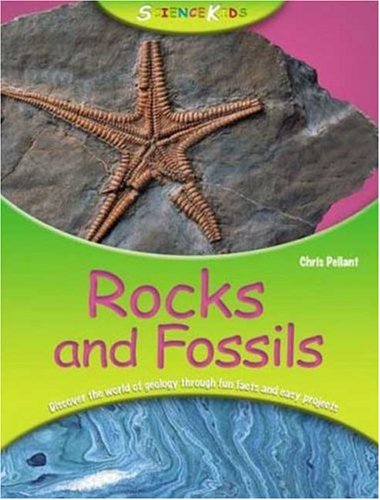-
Natural or Man-Made
Aaron Carr
Library Binding (Weigl Pub Inc, Aug. 1, 2012)Science Kids introduces beginning readers to the basics of science. These books cover topics such as recognizing patterns, identifying colors, and the difference between big and small. Each book features colorful photos, easy-to-read text, and an engaging activity to stimulate beginning readers and encourage scientific thinking. K
K
-
Kingfisher Young Knowledge: Rocks and Fossils
Chris Pellant
Paperback (Kingfisher, May 16, 2007)Packed with crisp photographs, engaging activities, and clear explanations, Rocks and Fossils is a detailed and fun guide to this favorite topic of all young geologists. P
P
-
Science Kids Insects
Barbara Taylor
Paperback (Kingfisher, April 15, 2008)How does a caterpillar become a butterfly? How do flies see? Which beetle uses chemical weapons? Microphotography and fact-filled text present an incredible variety of creepy-crawlies in stunning detail, revealing important information about life cycles, hunting techniques, social structures, and much more. P
P
-
Science Kids: Birds
Nicola Davies
Paperback (Kingfisher, May 16, 2007)Birds introduces young readers to the essential features of their fine featheredfriends. They'll look in detail at how birds fly, feed, communicate, reproduce, and raise their young. P
P
-
Big and Small
Aaron Carr
Library Binding (Av2 by Weigl, July 15, 2011)Book by Carr, Aaron M
M
-
Opposites
Aaron Carr
Library Binding (Weigl Pub Inc, Aug. 1, 2012)Science Kids introduces beginning readers to the basics of science. These books cover topics such as recognizing patterns, identifying colors, and the difference between big and small. Each book features colorful photos, easy-to-read text, and an engaging activity to stimulate beginning readers and encourage scientific thinking. D
D
-
Numbers
Aaron Carr
Paperback (Weigl Pub Inc, Aug. 1, 2012)Science Kids introduces beginning readers to the basics of science. These books cover topics such as recognizing patterns, identifying colors, and the difference between big and small. Each book features colorful photos, easy-to-read text, and an engaging activity to stimulate beginning readers and encourage scientific thinking. B
B
-
Kingfisher Young Knowledge: Mountains
Margaret Hynes
Paperback (Kingfisher, March 17, 2009)Nothing captures the imagination like majestic mountains, and this book is the perfect introduction to their history, geology, and wildlife. Including discussions of volcanoes, glaciers, avalanches, and even mountain climbing, this book covers the subject thoroughly from base to peak. P
P
-
Science Kids Reptiles
Belinda Weber
Paperback (Kingfisher, April 15, 2008)Why do snakes swallow their meals whole? Why do geckos need to lick their eyes? How do chameleons catch insects using their tongues? Vivid photography and clear text bring readers up close and personal with these slippery, slithery, and scaly animal favorites! P
P
-
Animal Patterns
Aaron Carr
Library Binding (Av2 by Weigl, July 15, 2011)Uses colorful photographs to examine the patterns of different animals, including zebras and butterflies. M
M
-
Plant Patterns
Aaron Carr
Library Binding (Av2 by Weigl, July 15, 2011)Young readers learn to discern the patterns that exist in the world of plants. L
L
